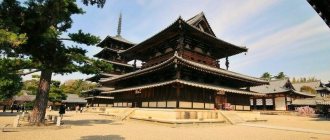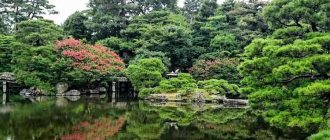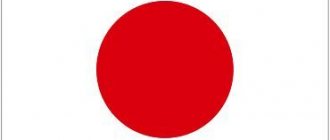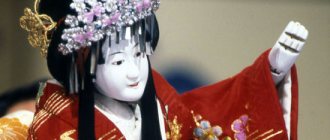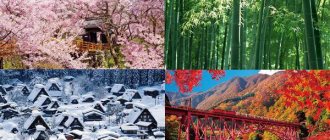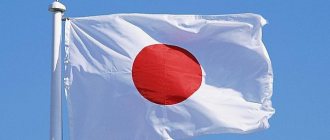In Japan everything is different. They dress differently, eat and sit differently, count days and years differently. It can be difficult for Westerners to understand what year it is in Japan. Since ancient times, the Japanese have taken the Chinese lunar-solar calendar as a basis, but this nation, with its special mentality, has made special changes to it. Now it is used mainly for ceremonies, astrology or some cultural purposes. We will try to understand the calendar in Japan in detail. We will also clarify what year it is now.
Calculation of years - methods
The Japanese call their island state "Nippon", which means the birthplace of the sun, the Chinese translated this name as the Land of the Rising Sun, the Russians distorted it to the word "Japan". These islands had three ways of calculating years, two of which are still in use today. But we will mention all three.
The oldest, which is no longer used, dates back to the founding of Japan by the legendary Emperor Jimmu more than five hundred years BC. e.
The Japanese copied another system from the Chinese. The Celestial Empire at that time was the most developed of all Asian countries. The year when a new emperor began to rule, after the death of the previous one, began a new countdown. It’s easy to find out what year it is in Japan. The 28th 年 (the character for the word "year") of the reign of Emperor Akihito.
In 1873, the country adopted the Gregorian calendar. It gradually took root and is used on a par with the traditional one. 2017年 is what year it is now in Japan. The year is written first, then the month, and the last is the date. All this is written in our traditional numbers. May 13, 2021 will look like this: 2017-5-13.
Date structure
First, let's take a look at the structure of the year in the Japanese calendar using this coin as an example:
1 - name of the era (in this image: Heisei); 2 - year from the beginning of the era (in the image: 14); 3 - Hieroglyph "Nen" - year.
It is worth noting that on old Japanese coins, characters may begin from right to left. The easiest way to determine this direction of writing is to find the hieroglyph “Nen” (No. 3 on the diagram). It is always located at the end of the date.
Emperor's reign
We keep our count of days from the Nativity of Christ without changing anything. In Japan, a different practice has developed. When a new emperor ascends the throne (he does not actually rule), he chooses a motto for himself - nengo, under which the time of his power will pass. This motto, composed of two prosperous hieroglyphs, is required so that the entire period of reign passes smoothly, without cataclysms. A special state commission, which studies ancient Chinese scrolls with classical literature for its selection, was created and is being created in Japan. What is the year now? This period is called the Heisei era, which means “Peace and Tranquility.” It began in 1989, when the divine chosen one Akihito came to power.
Japanese calendar
These days, the Japanese use the modern Gregorian calendar, which is used throughout the modern world.However, during its existence, Japan also used other calendars, which are still used today for astrological, religious, and cultural purposes.
Traditional Japanese calendars are the Chinese calendar with a sixty-year cycle, counting years from the beginning of the emperor's reign, as well as counting years from the legendary founding date of Japan.
Chinese calendar
The basis of the Chinese calendar is the sixty-year cycle. This cycle is created by a combination of 12-year cycles (“earthly branches”) and 10-year cycles (“heavenly trunks”). At the same time, half of the combinations (with different parities) are not used, and the cycle of the Chinese calendar is
10 • 12 = 60 years
| Ki-no-E (Elder Tree) | Ki-no-E-Ne | ||
| 2 | Wuxi (Ox) | Ki-no-To (Younger Tree) | Ki-no-To-Ushi |
| 3 | Tora (Tiger) | Hi-no-E (Elder Fire) | Hi-no-E-Tora |
| 4 | U (Hare) | Hi-no-To (Younger Fire) | Hi-no-To-U |
| 5 | Tatsu (Dragon) | Tsuchi-no-E (Elder Earth) | Tsuchi-no-E-Tatsu |
| 6 | Mi (Snake) | Tsuchi-no-To (Younger Earth) | Tsuchi-no-To-Mi |
| 7 | Uma (Horse) | Ka-no-E (Elder Gold) | Ka-no-E-Uma |
| 8 | Hitsuji (Sheep) | Ka-no-To (Junior Gold) | Ka-no-To-Hitsuji |
| 9 | Saru (Monkey) | Mizu-no-E (Elder Water) | Mizu-no-E-Saru |
| 10 | Tori (Rooster) | Mizu-no-To (Younger Water) | Mizu-no-To-Tori |
| 11 | Inu (Dog) | Ki-no-E (Elder Tree) | Ki-no-E-Inu |
| 12 | I (Boar) | Ki-no-To (Younger Tree) | Ki-no-To-I |
| 13 | Ne (Rat) | Hi-no-E (Elder Fire) | Hi-no-E-Ne |
| and so on… | |||
For example, according to the Japanese calendar, 2010 is the year of the Tiger, 2011 is the year of the Hare (Rabbit or Cat), and 2012 is the year of the Dragon.
Counting the years from the beginning of the emperor's reign
This method of counting years also came to Japan from China. Upon ascending the throne, the Japanese emperor proclaims the motto (“nengo”) of his reign. The year of proclamation of the motto is considered the first year of a new era, from which the subsequent counting of years begins.
Japan is now in the Heisei era, which means “Peace and Tranquility,” which began in 1989 with the ascension of Emperor Akihito to the throne.
Counting the years since the founding of Japan
According to legend, Japan was founded by King Jimmu in 660 BC. During the Meiji Restoration in Japan, a calendar was introduced in which chronology began from this date. This calendar was used in ancient Japan, but was supplanted by the system of counting years from the reign of emperors. The system of counting years from the founding of Japan was in use only until the end of World War II.
Cyclic calendar
The West is already quite familiar with it, but celebrates the onset of the Eastern New Year on its own dates, which do not coincide with the original source. According to this sixty-year cycle, each year is ruled by an animal and a special element.
There are five of these elements ruled by Saturn: wood, fire, metal, water and earth. They have their own colors: blue, red, yellow, white, black. In addition, the path of Jupiter is divided into twelve segments, each of which corresponds to an animal. They go in the order in which they came to the Buddha: rat, horse, bull, sheep, tiger, monkey, hare (rabbit), rooster, dragon, dog, snake, pig. We have already celebrated the New Year and know what year it is in Japan - the Rooster, of course. His symbol appeared on many European trinkets, dishes and clothing.
Modern calendar
The modern Japanese calendar includes twelve months, as is customary in the Gregorian calendar, the names of which correspond to the ordinal count of the moons (for example, January is the first moon, February is the second moon, etc.). A month consists of weeks of seven days each. The names of the days of the week are also connected by the names of the Moon, the Sun and the five visible planets. Each day of the month is also assigned a systematic name, which allows you to navigate what time the day belongs to (beginning, middle or end of the month).
The modern Japanese calendar includes fifteen traditional holidays. These days are called Shukujitsu
and, as a rule, are non-working.
Calculation in Japan
What is the year now? The chronology in Japan forces Europeans to look into the astrological signs of the coming year. We strive to please the new creature that comes, to prepare delicious dishes for him, so that he will protect us for a whole year. Of course, this is just a ritual that adds spice to the New Year holiday and is forgotten in Western countries the next morning. But in Asian countries, the New Year, which falls between the twentieth of January and February, is celebrated on a grand scale. Fireworks and all rituals are required. For example, the Japanese visit Shinto shrines, buy a toy Daruma deity, make a wish and paint one of his eyes. When the year ends, if the wish has come true, then Daruma’s second eye is painted over, and if not, then it is not touched. In any case, the wooden doll is sent back to the temple where it was bought and burned in special bonfires.
Motto of the era
Coming to the throne, each Emperor determined his own motto, under which the years of his reign passed. The motto was needed in order to use it to indicate some significant event or make a happy prediction, to magically influence the quality and character of the new era. To compose the motto, we tried to use only happy combinations of hieroglyphs.
Here are some, for example, mottos:
Empo
– long-lasting wealth;
Thai
- great changes;
Genna
– quick agreement;
Hoei
– eternal prosperity;
Showa
- the world is enlightened.
All the mottos carried good ideas, albeit similar to pipe dreams. Although, when an era began very badly, with disasters and destruction, it could be renamed and the countdown started again. However, this soon became prohibited.
The choice of the motto was a very important state moment. Even a special imperial commission was created to help the ruler decide on a motto. Most often, the phrase was borrowed from classical literature. There are a total of 252 mottos of Imperial Japanese rule.
Sakura time
From the north, from the Sea of Okhotsk to the south, where Japan is washed by the Pacific Ocean, there is an archipelago with almost seven thousand islands. Its length is three and a half thousand km. Therefore, asking about the weather is considered good manners for any Japanese.
The Japanese are really looking forward to the beginning of warm winds, when winter will be replaced by spring blooming with cherry blossoms.
Only she appears on different islands at different times. In the south, on the island of Kyushu, sakura can herald spring as early as February, and on the northern islands of Hokkaido and Aomori only in May. So if they ask: “What time of year is it now in Japan?”, then you need to navigate not by the calendar, but by the geographical location of a particular island. It’s like in our country - on the Black Sea coast spring is already about to turn into summer, and in the Moscow region in May piercingly evil northern winds blow, cold rain falls, and there are frosts at night. And according to the calendar, it’s spring, which residents of the Moscow region cannot wait for.
We hope that it is now clear to everyone how the current year is calculated in Japan.
From the history
The earliest in history was, borrowed from neighboring China, counting according to a 60-year cycle. In order to indicate each cycle, two hieroglyphs were used (a cyclic sign and a zodiac sign). The cyclic signs are called "jikkan", these are the elements - wood, metal, water, fire and earth. The Japanese call them trunks, and the zodiac signs call them branches. It turns out that the name of the year consists of a trunk and branches (because there are more of them). Since there are only 6 trunks and 11 branches, when the first trunk coincides with the first branch, exactly 60 cycles will pass and a new countdown will begin. Now such a complex system is almost forgotten and is used sometimes, only a 12-year small cycle.
4Nepal
Nepal now celebrates the year 2075 due to the use of the Nepali calendar. It is based on the ancient Vikram Sakrat calendar, which dates back to the reign of Emperor Vikramaditya. He took the throne in 56 BC. The number of days in a month here is constantly changing, depending on the year. Several calendar options are also popular here.
9China
So, the famous Chinese calendar, which we so often use in speech. Now the year is 4716, because the chronology begins in 2637 BC. e. We all know about 12 animals that are the patrons of 12 years, during which Jupiter makes one circle around the Sun. There are also five more colors and five elements of the eastern calendar.
This is how different years are celebrated all over the world. It’s amazing that years later, some states have retained their traditions and even chronology!
3Iran and Afghanistan
These two states live according to the Hijri solar calendar. According to him, in Iran and Afghanistan it is now only 1440. It was introduced in these countries in the 11th century. It was created by the greatest astronomers, including Omar Khayyam. It is more accurate than the others, tied to the spring equinox, and the year begins on March 21. Also, the week here starts on Saturday.
2Ethiopia
But Ethiopia is 7-8 years behind the rest of the world; it is now 2011. This is due to the fact that the inhabitants of this country use the Alexandrian calendar, which in turn originated from the Egyptian one. Like Gregorian there are 12 months, but there are an additional 5-6 days that are combined into the 13th month. Also, their day does not begin at 00.00, but at sunrise.
